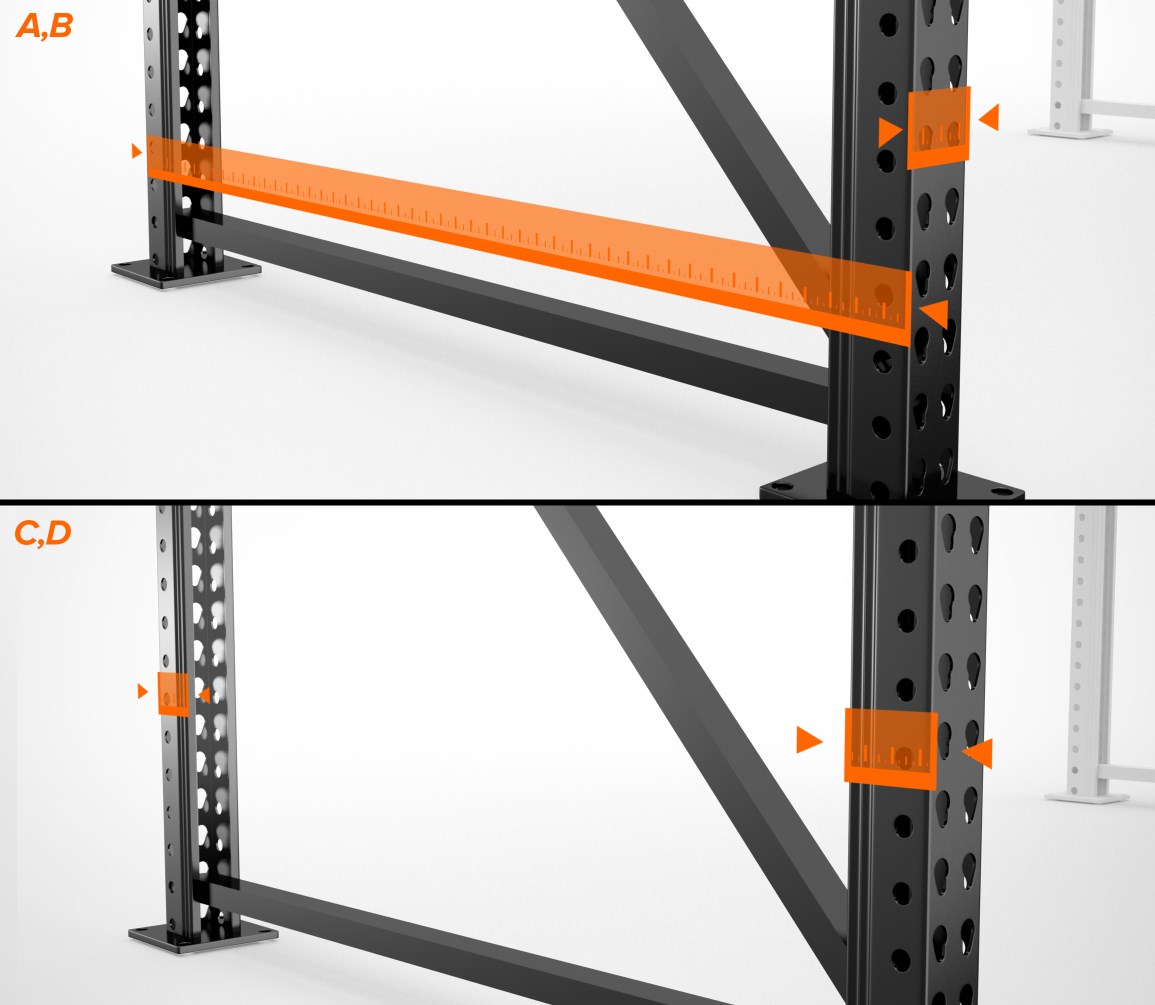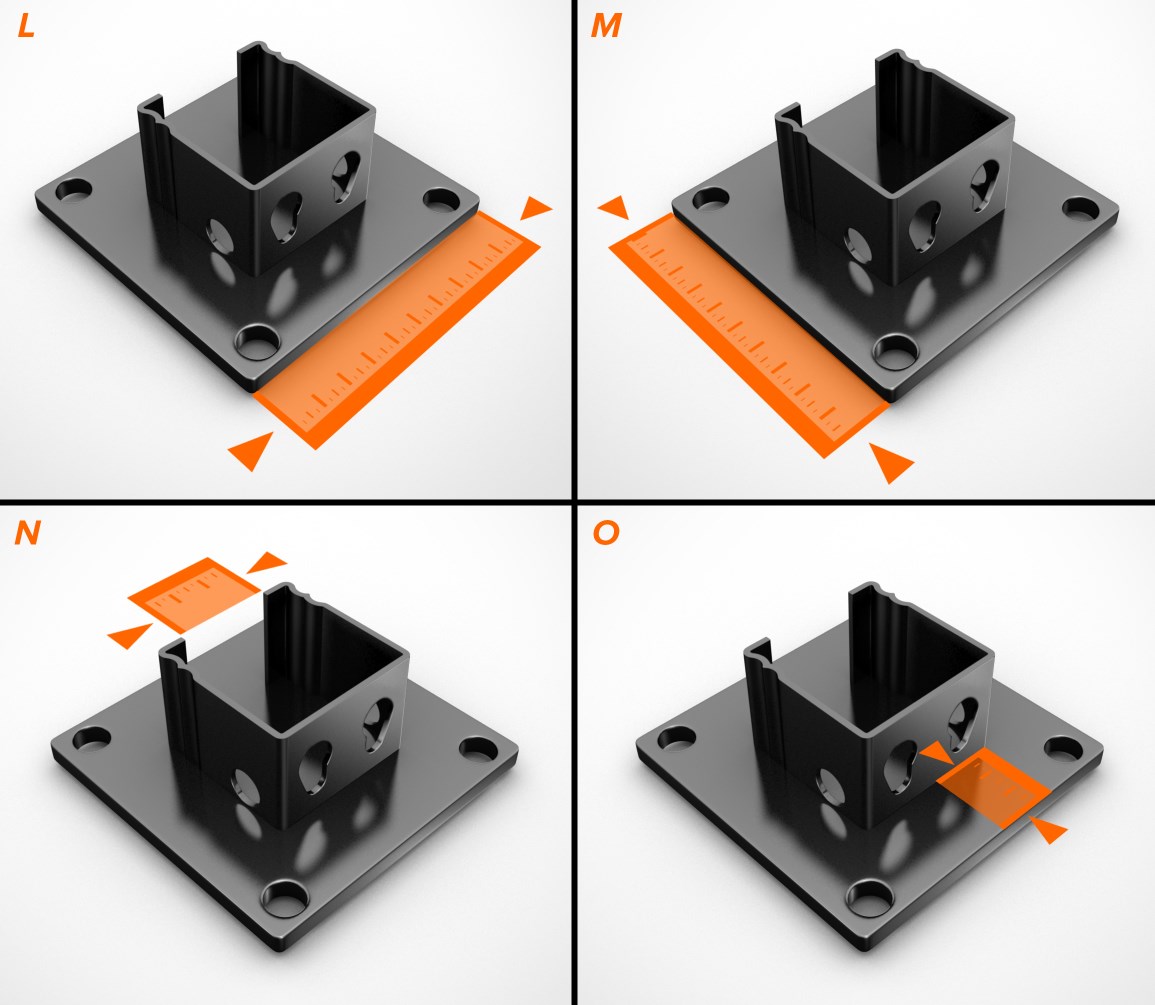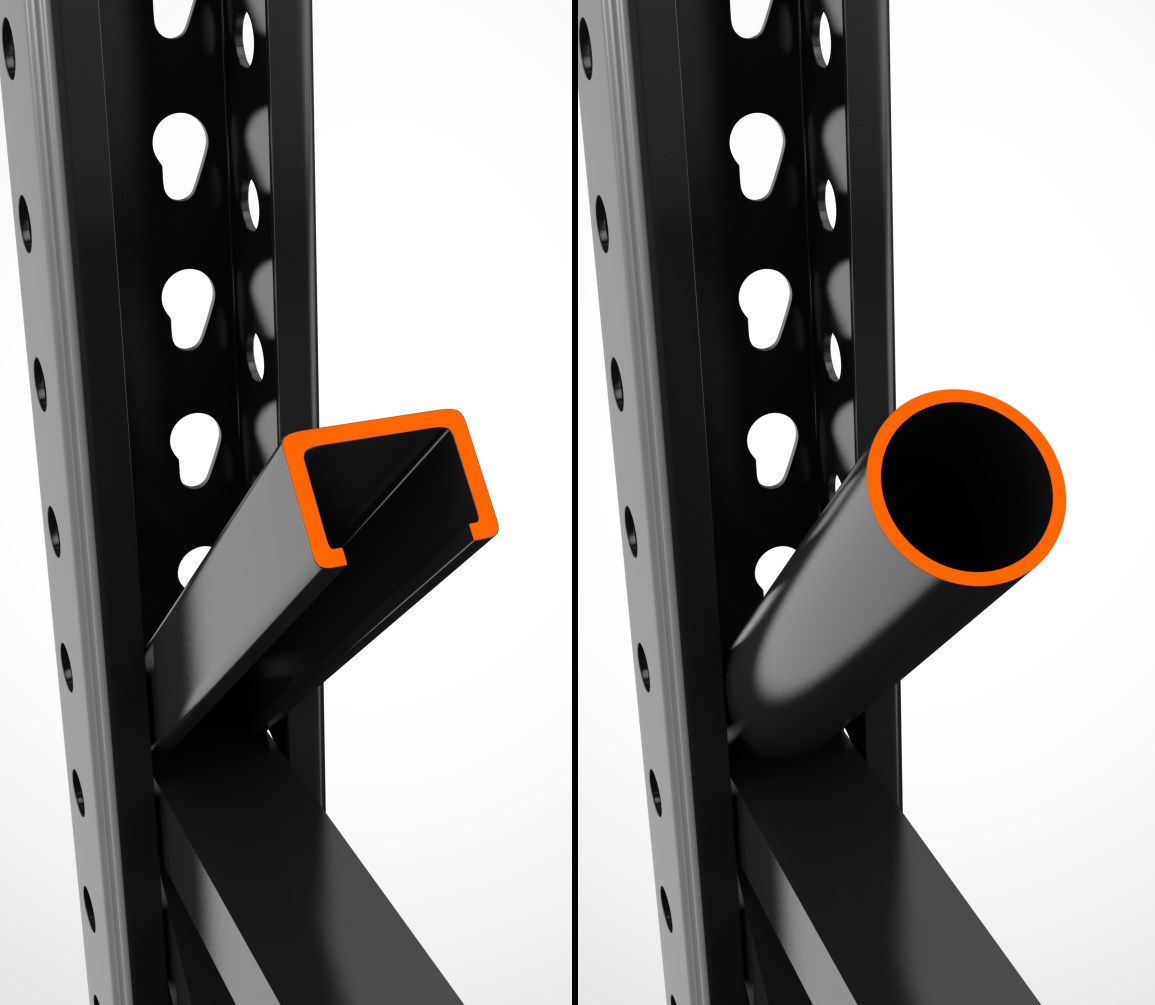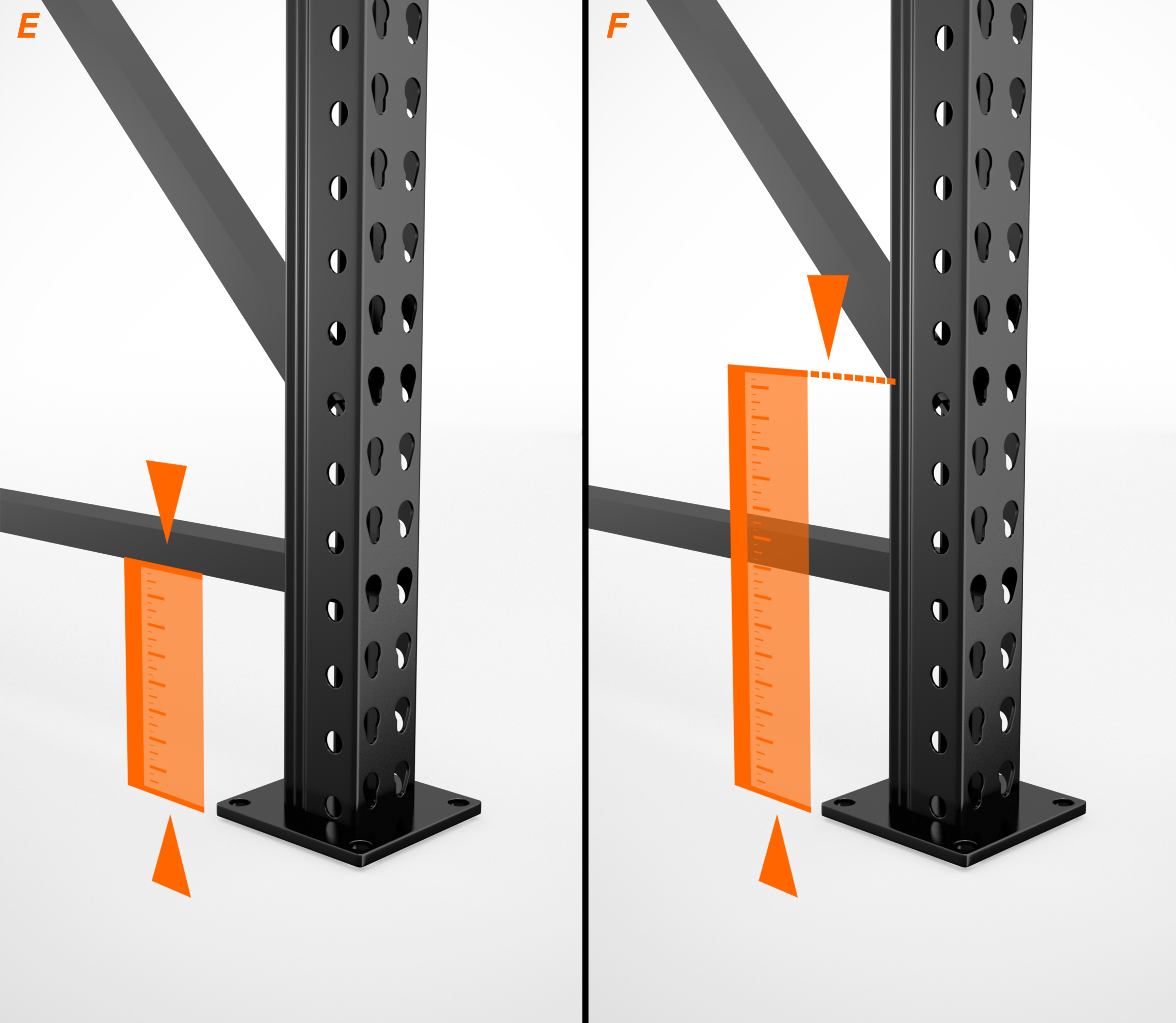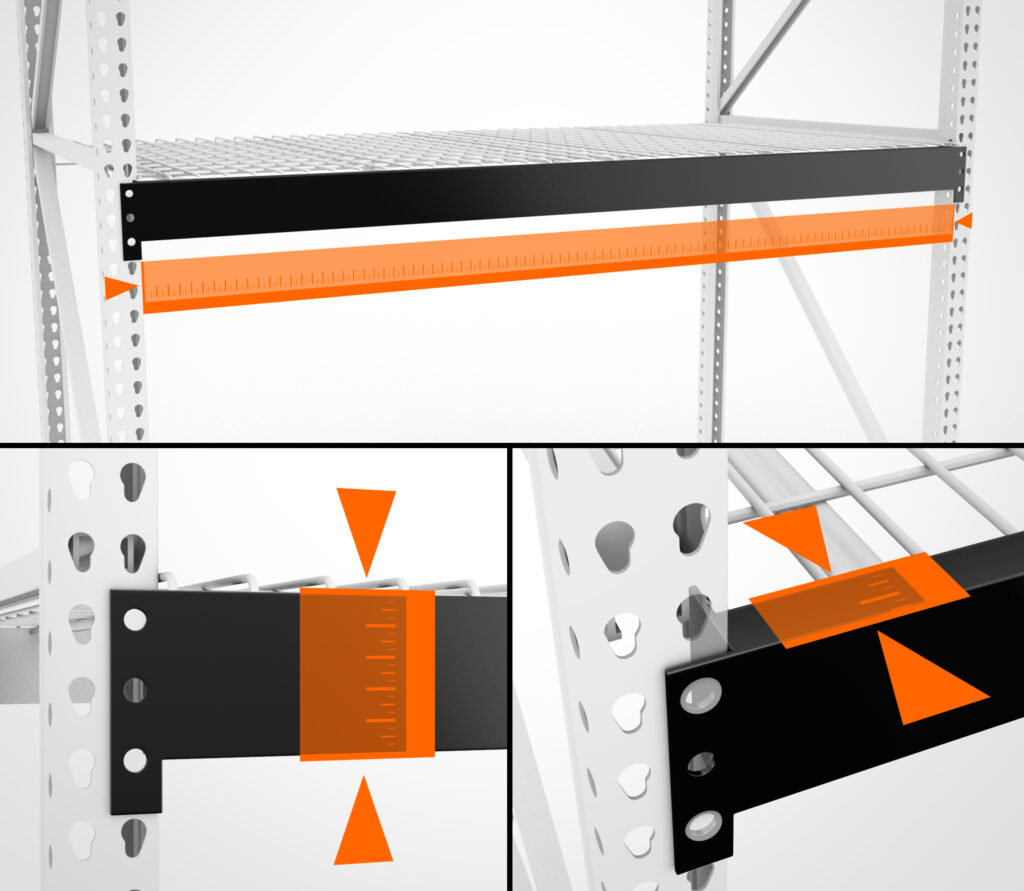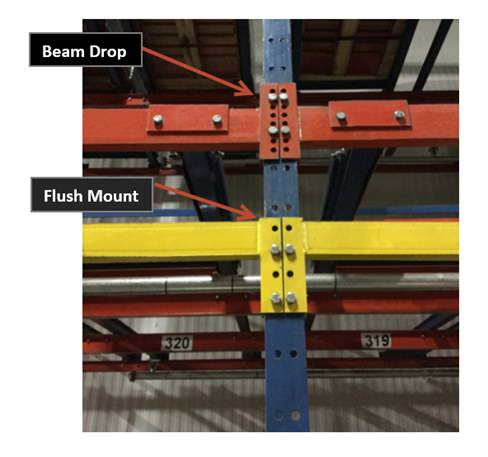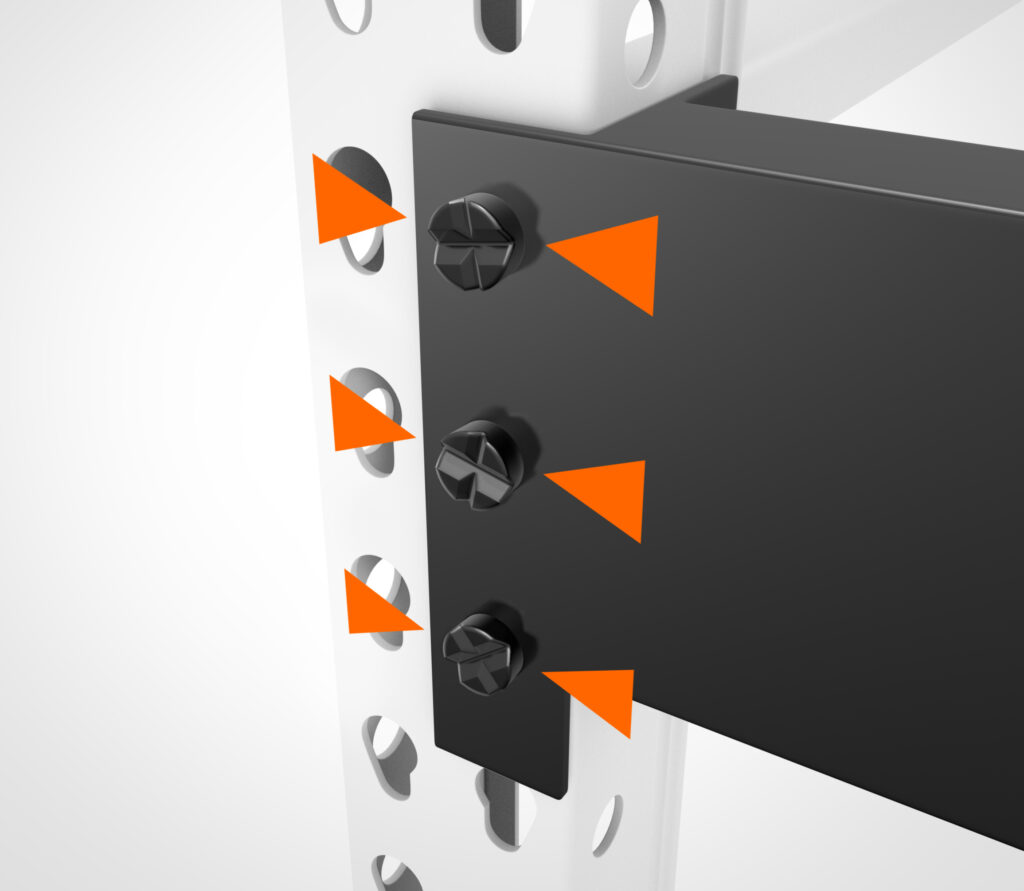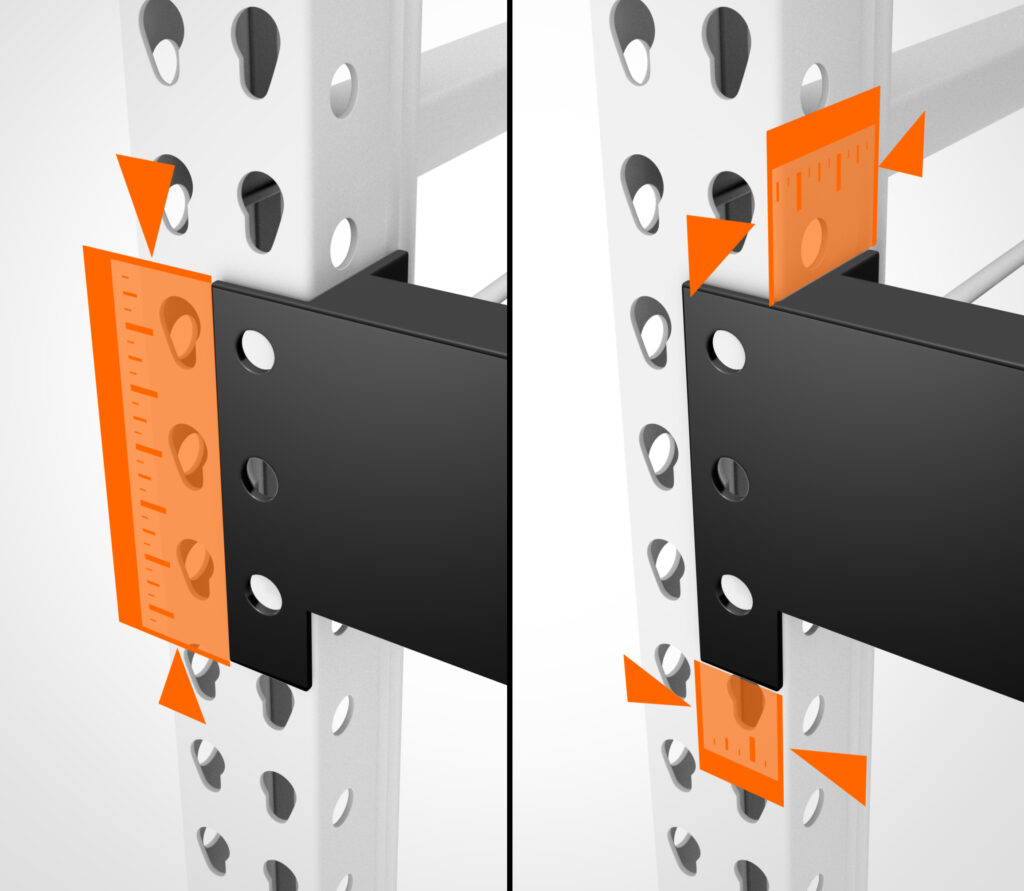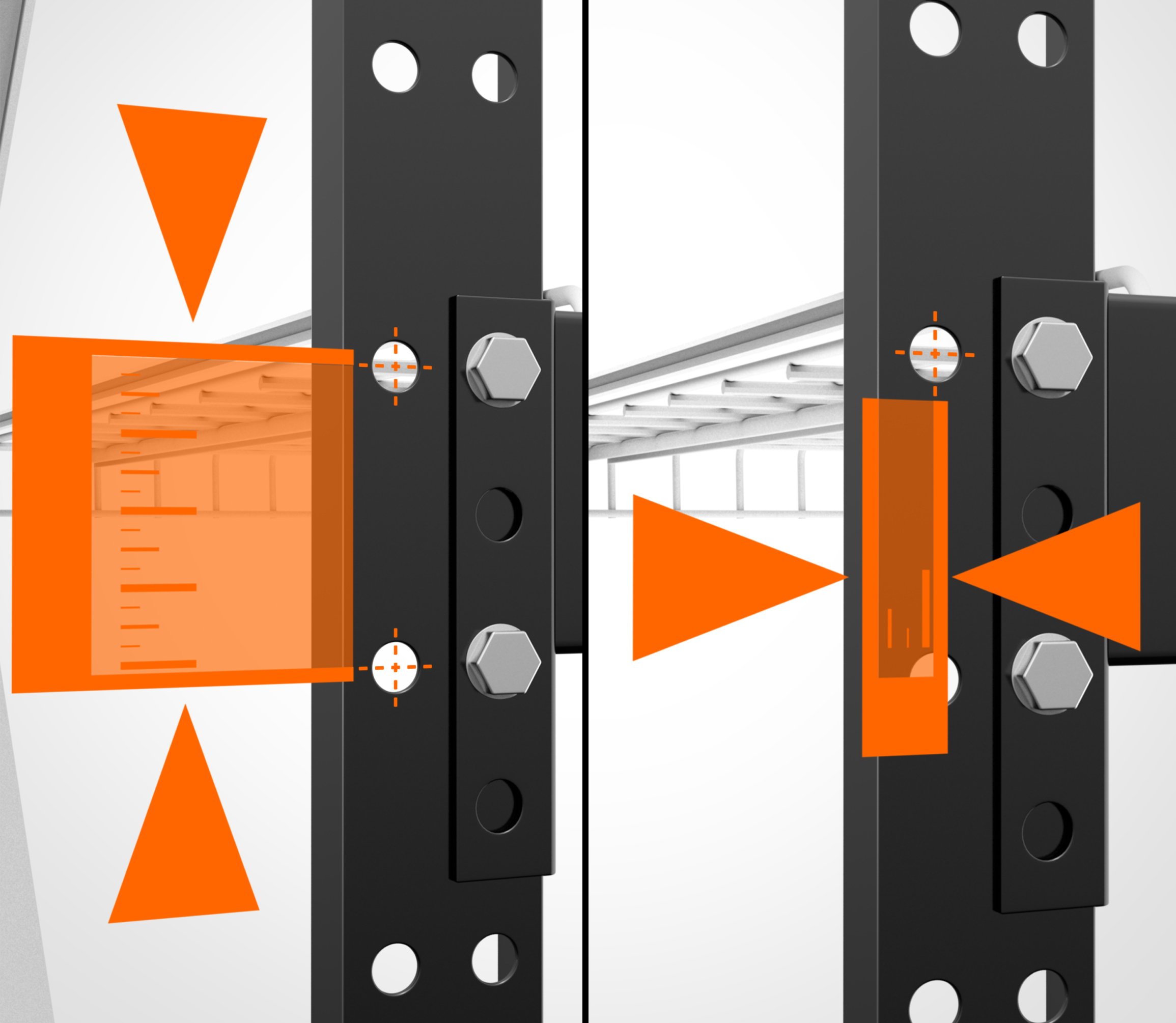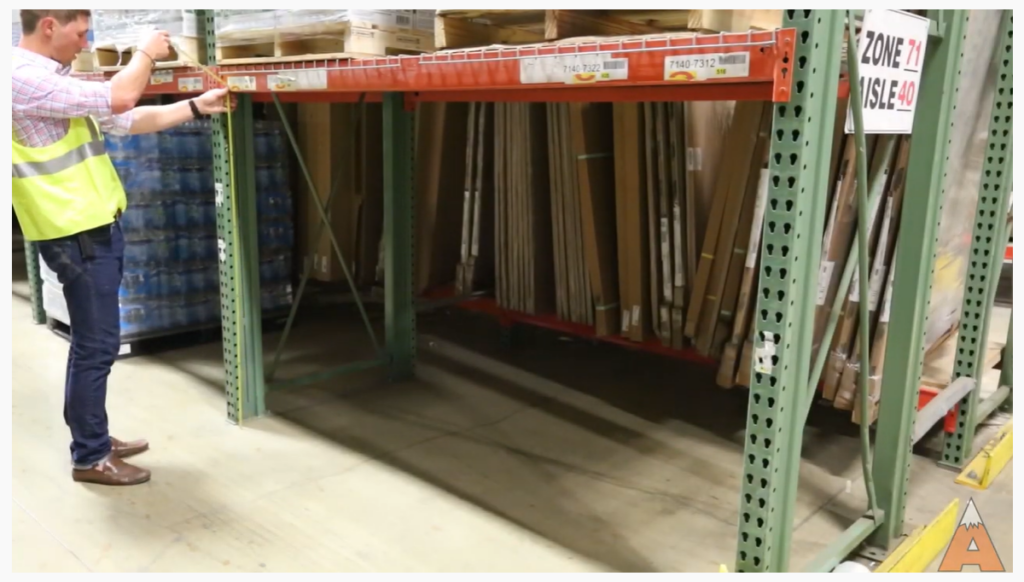
Whether starting from scratch, repairing damaged components, or adding to an existing pallet rack system, it’s important to understand standard rack dimensions and measure each component correctly. Structural capacity, system functionality, and safety depend on it. Here are a few tips to help you properly configure and measure pallet rack components to ensure the right fit every time.
Where to Start – Configuring Your Pallet Rack System
A pallet rack system consists of a series of upright frames and shelf beams connected to store multiple levels of pallet loads. The uprights are created by joining two columns with a series of horizontal and vertical struts. At the base of the columns are baseplates that anchor the upright to the floor. If you are taking system measurements, it’s important to note that front and rear columns on an upright can be different, so you may need to measure both columns.
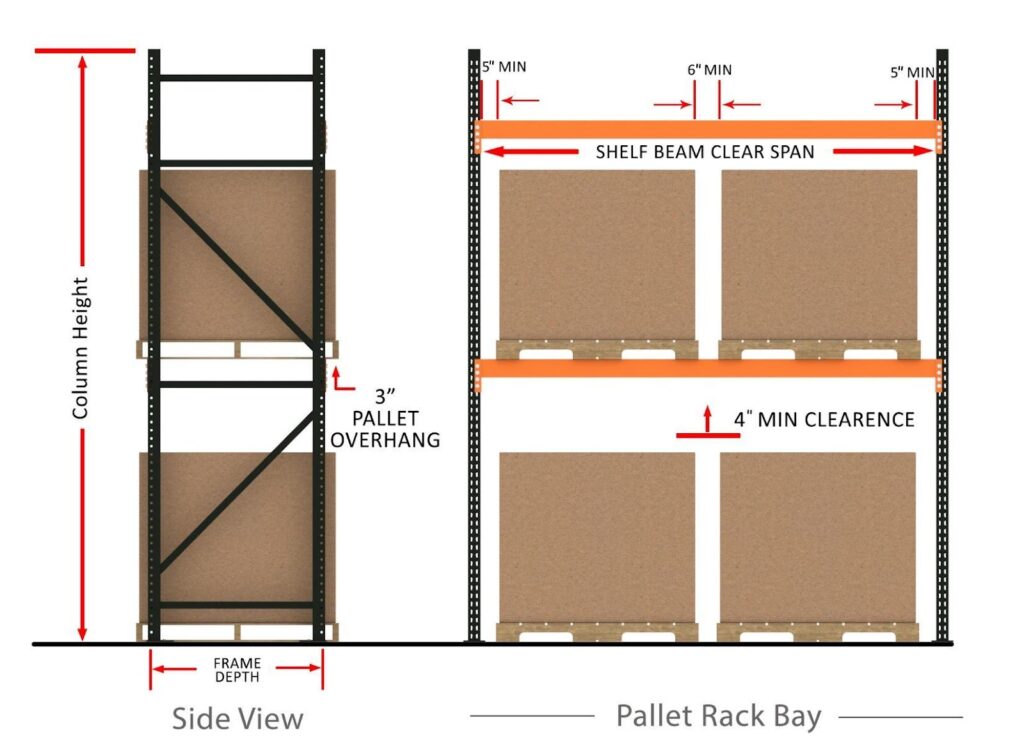
The pallet and load dimensions are the basis for the system design. A standard pallet rack system is configured for two pallets stored side-by-side in each bay. There should be 6″ between the pallets, 5″ on either side, and 4″ to 6″ above the pallet for liftoff. In seismic areas, the designs will vary. For example, the system may require larger baseplates, so it is critical to talk with an engineer to ensure your system meets all safety requirements.
Most bays are 42″ or 48″ deep, accommodating a variety of commonly used pallets. A 42″ system allows for pallet overhang in the front and rear of the rack, while a 48″ deep design fits the full pallet without overhang. To take a deeper dive into the pluses and minuses of a 42″ vs. 48″ wide pallet rack bay, take a look at our blog.
Structural vs. Roll-Formed Pallet Rack
There are two types of steel used to form pallet rack components – roll-formed and structural. Both rack types are structurally sound; however, there are some essential distinctions between the two rack types. The difference between them has to do with the manufacturing process of the steel beams and columns. To learn more about structural vs. roll-formed pallet rack, go to our blog dedicated to the topic.

How to Measure Pallet Rack Components
A careful look at your system will help you discern the component measurements you will need for your new racking system. When gathering your pallet rack system measurements, you will focus on the main components and use the guidelines outlined in the illustrations below. Follow these guidelines to obtain your measurements.
- Upright Frames
- Custom Frames
- Struts
- Beams
- Beam Connections
- Decking
Upright Frame Measurement
To determine the upright frame dimensions, you will take six measurements.
-
- Upright frame depth – Measure from outside of the first column across to the outside of the opposite column. Typically the depth is 36″ to 48″ but can vary for custom systems. (A)
- Column width – Measure the width of the face of the column. Next, measure the side. Both measurements may be the same, or they can differ—the bigger the column, the higher the rated capacity. (B)
- Column height – Starting at the base of the column where it attaches to the baseplate, measure up to the top.
- Front column depth – Measure from the front to the back of the column. (C)
- Back column depth – Measure from the front to the back of the column. (D)
- Baseplate size–
- Measure the length and width of the baseplate. (L,M)
- Measure the distance from the edge baseplate to the column, front, and side. (N,O)
Custom Frame Measurement
Seismic Backer – Reinforced Column
In some cases, reinforced columns add strength and stability. Backers are positioned behind the front column and typically only extend above the first pallet position. Backers can increase load capacity and protect the system against failure from equipment strikes or earthquake damage.
Take two measurements to determine the size of your backer.
- Measure from the floor to the top of the reinforcement to get the height for both the front and rear columns. (J,K)
- Measure the depth starting from where it is welded to the column for both the front and rear columns.(C,D)
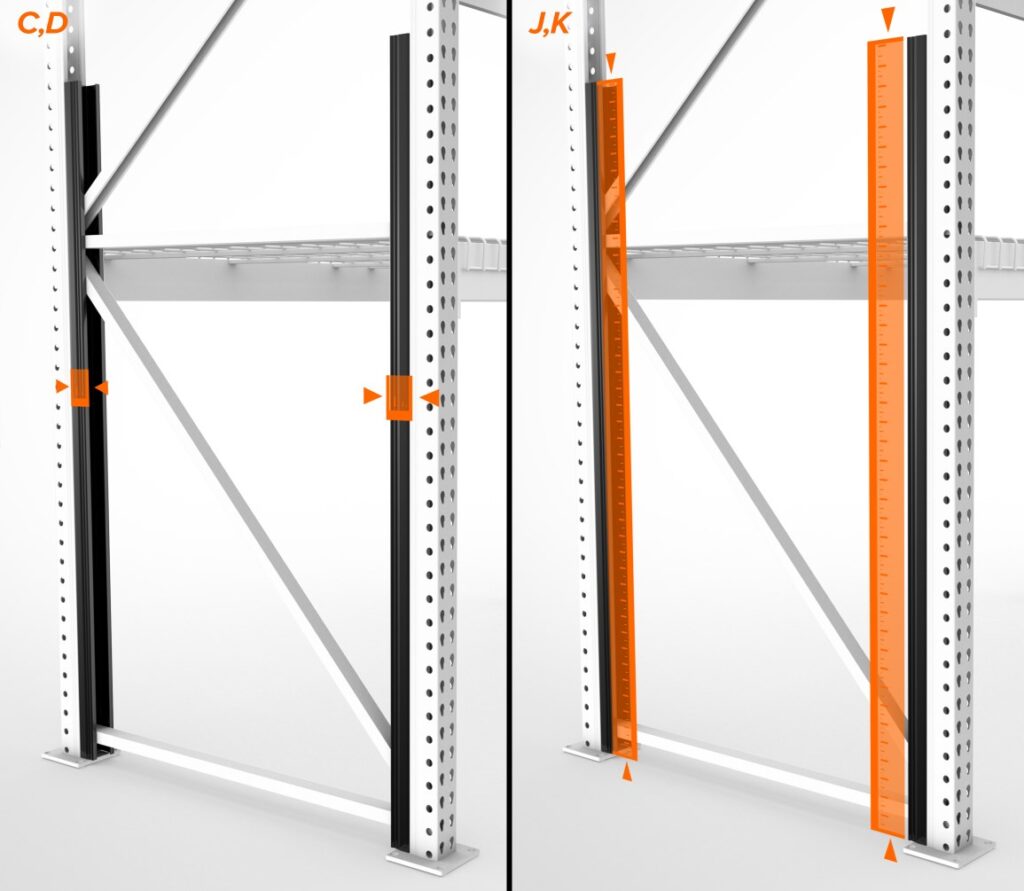
Offset & Sloped Leg Frame Measurement
If your pallet rack column is angled or sloped to allow for a greater forklift turning radius, you will have to take slightly different measurements than for a standard column. Click to learn more about offset and slope leg frames.
- Measure the height of the frame at the start of the slope.
- Measure the depth of the frame depth at the base of the upright.
- Measure the frame depth at the top of the sloped section just below the first rack bay.
- Clearly note if the frame is offset, sloped, or cant leg.
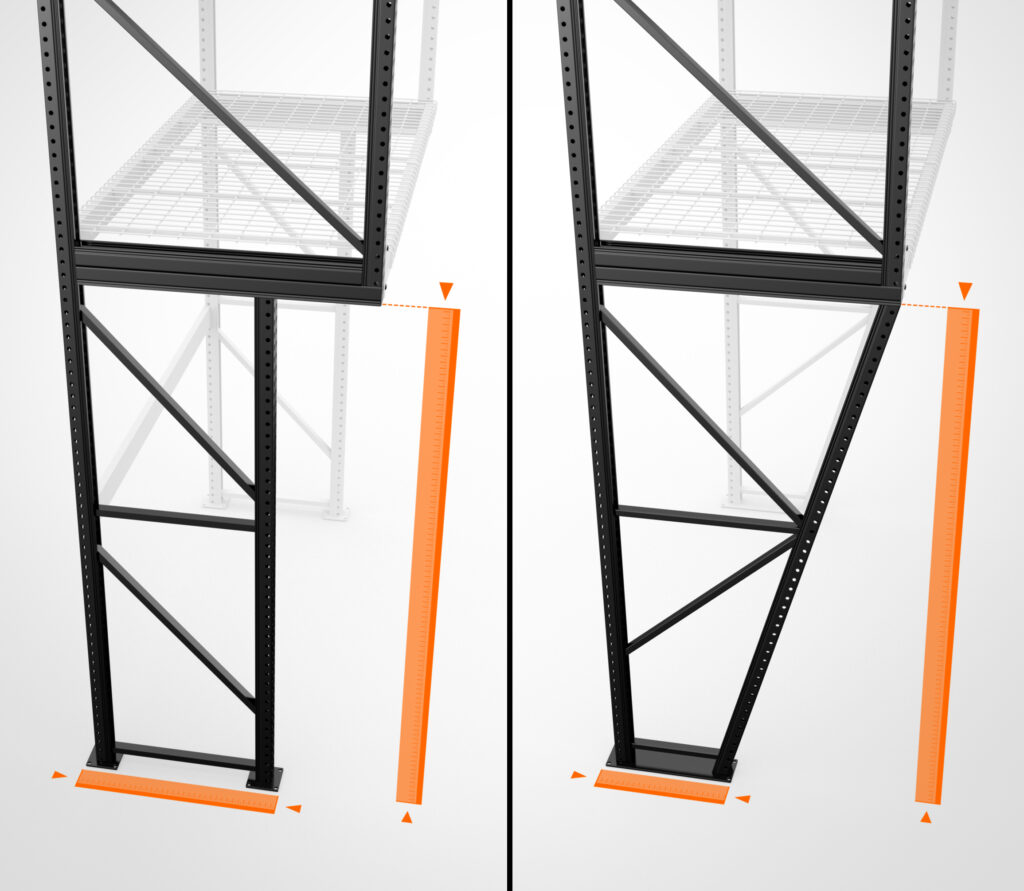
Beam Spacing
The following beam spacing measurements are necessary when retrofitting or replacing pallet rack columns.
- Measure the largest opening between the beams.
- Measure from the floor to the bottom of the beam connector (P)
- Measure from the floor to the top of the beam. (Q)
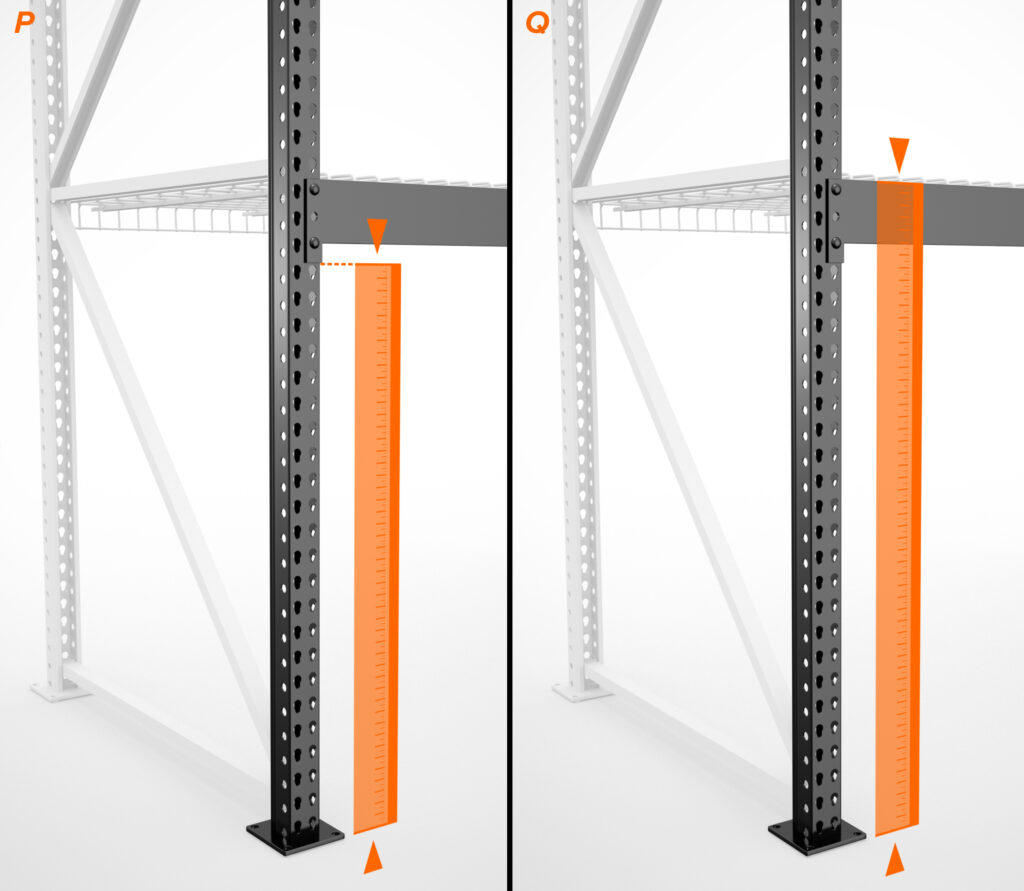
Struts & Strut Measurement
Struts are either horizontal or diagonal steel components that provide bracing between the columns to help form the upright. First, determine if the strut is a square or round tube shape.
To measure horizontal struts for replacement or add-on uprights:
- Start at the floor and measure up to the underside of the strut. (E)
- Measure from the floor to the point where the column and first diagonal strut connect. (F)
Beam Measurement
For a proper beam assessment, you will take three measurements.
- Beam Length – Crossbeams have connectors at the ends that attach the beam to the upright. When taking a beam measurement, do not include the connector. The beam measurement starts at the inside of the upright and measures to the inside of the opposite upright. The most common beam length is between 48” to 108″. (top image)
- Beam face (thickness) – Measure from the top of the beam to the bottom to find the face size. This measurement is critical in load capacity determination. The larger the face, the larger the allowable capacity. (bottom left)
- Beam depth – From the top of the beam, measure from the front to the back to determine the width. (bottom right)
Beam Connector Plates
Beam connector plates can vary widely by system type and pallet rack manufacturer. Most are welded flush with the top of the beam; however, the beam can be positioned in the middle or at the bottom of the plate creating a beam drop. Beam drops create a pitch from rear to front of the rack system to accommodate flow rails for pallet flow or push-back rack. Beam drops are also used to create pick locations.
Larger connector plates will provide more system stability left to right. Usually, beams are centered on larger plates. Several measurements will enable you to duplicate a proper beam to upright attachment.
- Identify beam connector – Structural rack has round holes for bolted connections, whereas roll-formed rack can have various connection types from clips to bolts to pins. Step beams can have 2-, 3- or 4-pin or a tab-end connector.
- Capture the number of pins – How many holes does the connector have?
- Connector height – Measure the connector from top to bottom.
- Connector width – Measure the width of the connector across the face of the upright.
- Connector depth – Measure the connector width along the side of the upright.
- Upright punches – Measure the distance between the holes on the upright using the center of the holes as your start and endpoint.
Beam Punches
In some instances, your beam may have punches over and above the beam connections. Indicate the total number of punches and complete the following measurements:
- Measure from the edge of the beam to the center of the first hole.
- Measure the top of the beam to the center of the first hole.
- Repeat for all holes.
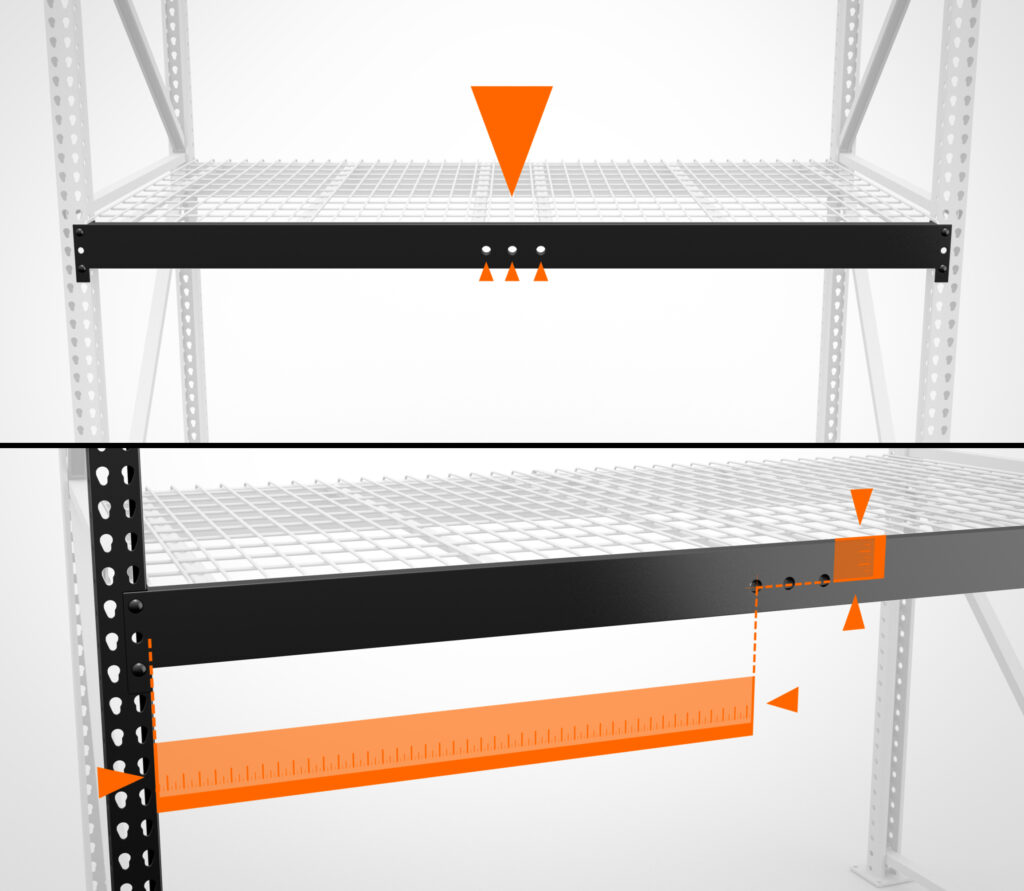
Measuring Pallet Rack Decking
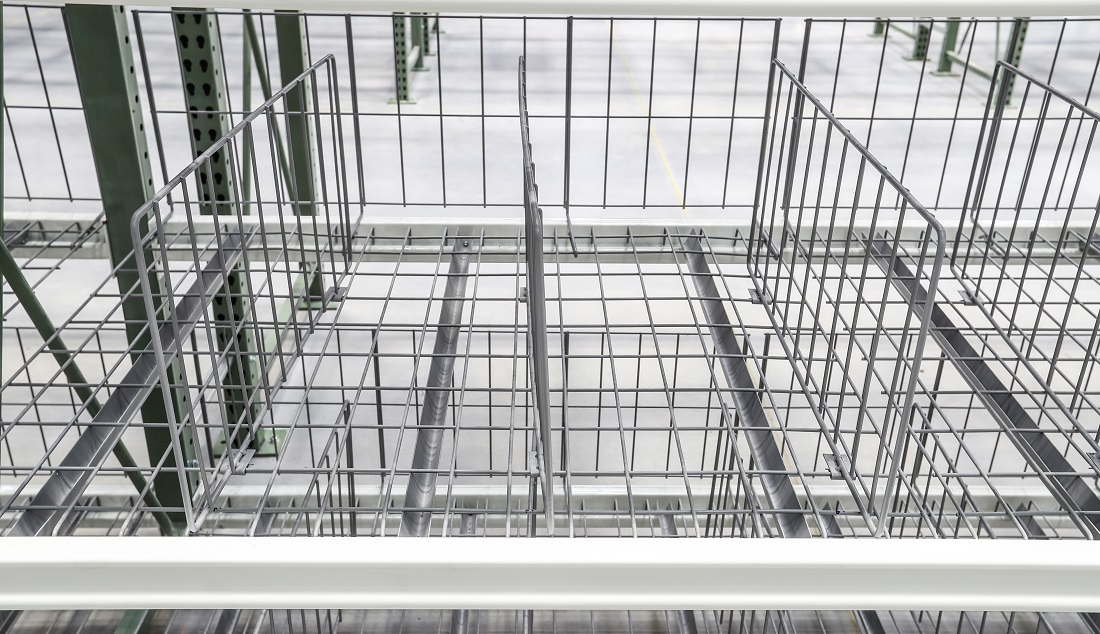
Inside Waterfall Wire Decking
Several materials are used as pallet rack decking; however, wire decking is the most common. Various options create a challenge when obtaining a precise measurement. Wire decking comes in two styles, flared channel deck and step deck. Within the step deck, there are additional styles as well. So, know which type of wire decking you will be installing before committing to a size.
For example:
A waterfall design will wrap around the outside of the front crossbeam, so the beam depth is an important measurement.
An inside waterfall or flush deck style of wire decking will mount to the inside of a step beam, requiring a particular set of measurements.
You will need your upright depth measurement and beam length in addition to the following:
- Looking down at the top of the beam, measure the width.
- If the step beam is mounted, measure the depth of your beam step.
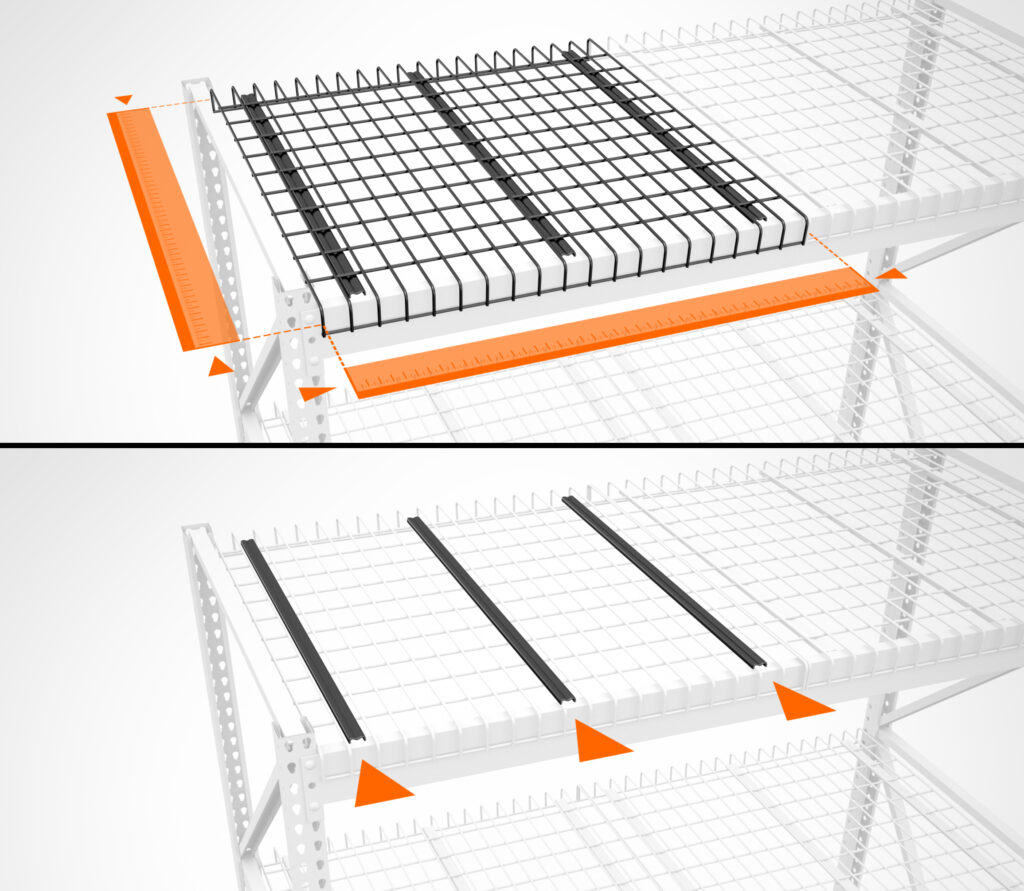
Waterfall Wire Deck
Just the Right Fit
With the measurements above, you should be very well on your way to your new storage racking system design and, ultimately, installation. If you are looking for fast delivery of pallet rack components, look no further than Apex Quick Ship inventory. We offer new and used crossbeams, frames, and accessories like wire decking.
The Apex team is available to help you make the right choices and support you with as little or as much of our full-service offerings as you need, from design and engineering to installation, equipment, rack assessment, repair, etc. Call our team today for great products and advice, and fast service.


